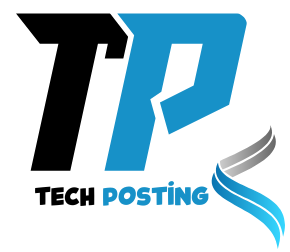In the quick-paced and noticeably competitive construction industry, accurate cost estimation is the spine of each hit assignment. While many depend on creation estimating agencies to control this important challenge, it’s nonetheless essential to recognize the common pitfalls estimators face and how to effectively stay clear of them.
Incomplete Scope Review
One of the most accepted mistakes is failing to thoroughly assess the assignment’s scope. An estimator who skips this step might also forget about vital components, including website education, software connections, or cloth specs. Construction Estimating Companies lead to underestimation or, in some cases, overestimation, both of which may be pricey.
How to Avoid It: Begin every mission with an in-depth assessment of the architectural and engineering plans.
Relying on Outdated Data
Costs for substances, labor, and equipment vary. Using old pricing facts or ancient facts without adjustments for inflation or present-day marketplace tendencies can skew the estimate considerably.
How to Avoid It: Update value databases often and consult providers and subcontractors for modern pricing. Industry software program equipment often offers real-time pricing updates, which can be helpful in preserving accuracy.
Overlooking Indirect Costs
Estimator, once in a while, consciousness is entirely on direct costs—like hard work, materials, and equipment—even as ignoring indirect fees which include administrative costs, coverage, permits, and contingency allowances. These hidden charges can add up speedy and impact the general budget.
How to Avoid It: Include a segment for oblique expenses in every estimate. Speak with accounting or monetary groups to recognize the total variety of prices a task would incur. A contingency line item must usually be protected to cover unforeseen costs.
Inaccurate Labor Productivity Assumptions
Estimators frequently base their calculations on assumed exertion productivity rates. However, elements like weather conditions, web page accessibility, team of workers’ ability tiers, and challenge complexity can significantly affect labor efficiency.
How to Avoid It: Perform a risk evaluation as part of the estimating process. Identify potential dangers and quantify them in terms of cost and possibility. Include a contingency reserve proportionate to the project’s hazard profile.
Lack of Standardization in Estimates
When estimators use inconsistent techniques, gear, or codecs, it can result in confusion, omissions, and inefficiencies. This inconsistency makes it tough to examine estimates or examine their accuracy over the years.
Construction Estimating Services that all crew members observe. Utilize dependable software program tools that ensure consistency and permit easy documentation and revisions. Training the body of workers on a unified technique can considerably improve output nicely.
Inadequate Use of Technology
Many estimators nevertheless depend closely on manual tactics or primary spreadsheets, increasing the likelihood of human error and lowering overall performance. In today’s digital age, this may be a prime downside.
How to Avoid It: Invest in a contemporary estimating software program that integrates with project control gear. These packages often come with templates, cost databases, and reporting functions that streamline the estimating method and reduce errors. Outsourcing to expert construction estimating offerings can also offer access to the latest generation and first-class practices.
Miscommunication with Stakeholders
Poor communication among the estimator and mission stakeholders—together with architects, engineers, and clients—can bring about wrong assumptions and noted necessities. These information gaps frequently translate to steeply priced trade orders throughout construction.
How to Avoid It: Establish clean strains of conversation early in the undertaking. Schedule normal meetings with stakeholders to study plans and make clear expectations. Document each decision and replace the estimate for that reason to mirror any adjustments.
Overconfidence in Personal Judgement
While reveling in its value, depending entirely on intuition or private judgment can introduce bias and inconsistency. This can be specifically intricate while estimating new or complex assignment types.
How to Avoid It: Support instinct with information and proof. Cross-reference with similar beyond initiatives and use a software program to validate your assumptions. Peer reviews and audits can also capture errors that would otherwise go noted.
Neglecting Drawing Accuracy and Coordination
A frequently-ignored mistake is assuming that venture drawings are accurate and well-coordinated. Misalignments between architectural, structural, and MEP (mechanical, electrical, plumbing) plans can bring about expensive on-site issues in the field’s work and accurate estimation.
Collaborate with CAD Drafting Companies to ensure that drawings are updated and properly coordinated, rather than basing estimates on them. This preemptive degree can assist in perceiving discrepancies early, saving time and money for the duration of creation.
Conclusion
Construction fee estimating is both an art and a technological know-how. Even small errors may have huge consequences, affecting profitability and undertaking timelines. By information and avoiding those commonplace mistakes—ranging from incomplete scope reviews to old pricing and negative communication—estimators can substantially improve the accuracy and reliability in their work. Embracing the era, standardizing techniques, and leveraging enterprise expertise are all vital steps closer to greater reliability and aggressive bids.

